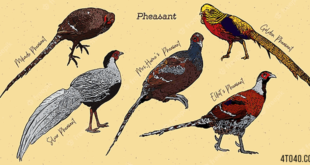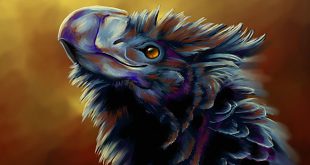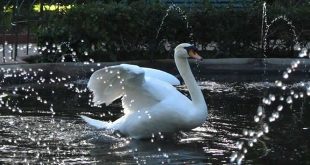| Kingdom: | Animalia |
| Family: | Diomedeidae |
| Order: | Procellariiformes |
| Class: | Aves |
Albatross — Albatrosses, of the biological family Diomedeidae, are large seabirds allied to the procellariids, storm-petrels and diving-petrels in the order Procellariiformes (the tubenoses). They range widely in the Southern Ocean and the North Pacific. They are absent from the North Atlantic, although fossil remains show they once occurred there too and occasional vagrants are found.
Albatrosses are among the largest of flying birds, and the great albatrosses (genus Diomedea) have the largest wingspans of any extant birds. The albatrosses are usually regarded as falling into four genera, but there is disagreement over the number of species.
Albatross: Bird Encyclopedia for Kids
Albatrosses are highly efficient in the air, using dynamic soaring and slope soaring to cover great distances with little exertion. They feed on squid, fish and krill by either scavenging, surface seizing or diving. Albatrosses are colonial, nesting for the most part on remote oceanic islands, often with several species nesting together. Pair bonds between males and females form over several years, with the use of ‘ritualised dances’, and will last for the life of the pair. A breeding season can take over a year from laying to fledging, with a single egg laid in each breeding attempt.
Of the 21 species of albatrosses recognized by the IUCN, 19 are threatened with extinction. Numbers of albatrosses have declined in the past due to harvesting for feathers, but today the albatrosses are threatened by introduced species such as rats and feral cats that attack eggs, chicks and nesting adults; by pollution; by a serious decline in fish stocks in many regions largely due to overfishing; and by long-line fishing. Long-line fisheries pose the greatest threat, as feeding birds are attracted to the bait, become hooked on the lines, and drown. Identified stakeholders such as governments, conservation organisations and people in the fishing industry are all working toward reducing this bycatch.
Most albatrosses range in the southern hemisphere from Antarctica to Australia, South Africa and South America. The exceptions to this are the four North Pacific albatrosses, of which three occur exclusively in the North Pacific, from Hawaii to Japan, California and Alaska; and one, the Waved Albatross, breeds in the Galapagos Islands and feeds off the coast of South America. The need for wind to enable gliding is the reason albatrosses are for the most part confined to higher latitudes; being unsuited to sustained flapping flight makes crossing the doldrums extremely difficult. The exception, the Waved Albatross, is able to live in the equatorial waters around the Galapagos Islands because of the cool waters of the Humboldt Current and the resulting winds.
The albatross diet is predominantly cephalopods, fish, crustaceans, and offal, although they will also scavenge carrion and feed on other zooplankton. It should be noted that for most species, a comprehensive understanding of diet is only known for the breeding season, when the albatrosses regularly return to land and study is possible. The importance of each of these food sources varies from species to species, and even from population to population; some concentrate on squid alone, others take more krill or fish. Of the two albatross species found in Hawaii, one, the Black-footed Albatross, takes mostly fish while the Laysan feeds on squid.
 Kids Portal For Parents India Kids Network
Kids Portal For Parents India Kids Network



